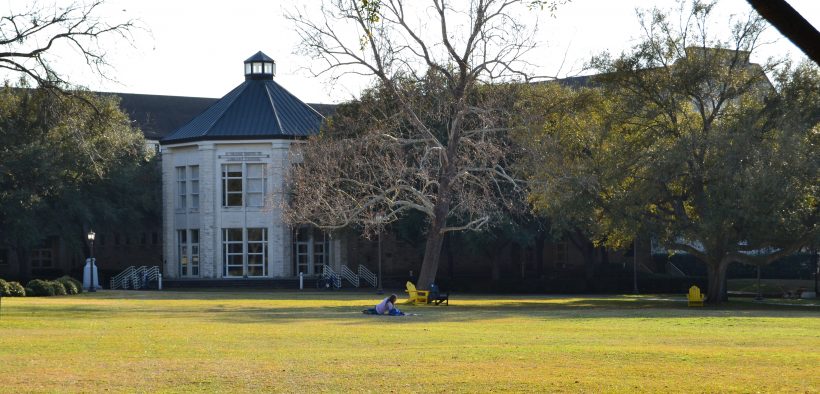Why Has Tuition Increased?
Share

Photo by: Sherlyn Ong
By: NatalieDeCesare
The Board of Trustees approved a 3.4% collective increase in tuition and fees for next year. What information did they assess to reach such a decision? The Board of Trustees approves annual tuition, room and board rate increases based on analysis prepared by the University’s administrative leadership team. This analysis includes comparisons against a peer group of other national liberal arts colleges that are primarily defined by some combination of geography, size and student application overlap (competitors). In addition to the above peer group, the University also compiles a comparative list of major Texas private institutions.
The Board of Trustees evaluates the annual increase to tuition, room and board on both a percentage and real dollar basis. The increase also factors in known or projected University expense increases for the upcoming year. The collective 3.4% increase for 2016-17 is comprised of a .40% tuition increase, a 3.0% room increase, and 0.0% in board. So as an example with board, there was no increase passed on to the student because the University’s contract with our food service provider increased by a very small percentage, and there was not an underlying operating expense increase that needed to be funded.
Finally, the Board of Trustees evaluates the increases in the context of the projected annual operating budget. Total expected revenue sources for the academic year should equal or exceed operating expenses or the University will have an operating deficit. Other revenue sources include philanthropy and endowment support to operations, which constitute a major source of support that helps keep tuition as affordable as possible and also fund many of the scholarships that are awarded to our students.
How will this increase maintain Southwestern’s education standards? The increase allows the University to continue supporting and/or expanding existing programs while also providing opportunities to pursue new programs that have the ability to extend the academic reach and mission of the institution.
Additionally, the increase allows the University to continue offering current services to students. The University contracts with vendors for a myriad of services that pass along annual increases that either need to be funded or decisions made to end those services.
Without the increase, how would have SU been at a disadvantage? Without the increases, SU would either have to find the funds elsewhere, or more likely, cut programs and offerings to balance the budget.
What are some preveious effects of raising tuition? Is their evidence to support a positive correlation between increasing costs and a better educational experience at SU? As with most every other private and public higher education institution, SU has almost always passed an annual cost of attendance increase through some combination of tuition, room, and/or board increases so the rise in fees this year is nothing new or extraordinary. Higher education is no different than most other businesses where annual inflationary increases in operating expenses require prices to increase for their products or services.
How does this change in tuition compare with state and national trends in costs? How will this change keep SU competitive? For the last several years, SU has lagged or passed lower annual increases to cost of attendance than our national liberal arts peer group. We are very aware of the investment being made by students and their families in a Southwestern University education, and we are doing everything in our power to keep the required level of investment as low as possible without being detrimental to the educational experience.
Dr. Burger’s message to students and parents stated that “the University is investing more than $30 million for the upcoming academic year.”
How does this relate to a higher tuition and fees? The more than $30 million invested refers to the amount of institutional aid that the University provides on an annual basis in the form of merit and need-based financial aid to students. This amount refers to University funded aid and is in addition to any federal and state financial aid awards or outside scholarships that a student receives.
In addition to the $30 million in institutional aid, the University funds annual operating expenses not covered by net tuition revenue with endowment spent and annual gifts from donors. This amount has equaled approximately $12,000 per student in recent academic years.
Anything else you’d like students to know? The University remains committed to being efficient, diligent and mindful with financial resources. The University understands and is sympathetic to the cost of higher education overall, and we realize the significance and magnitude of the investment for students and their families. We want every student to work hard and leverage their investment for the greatest possible academic and professional return.
